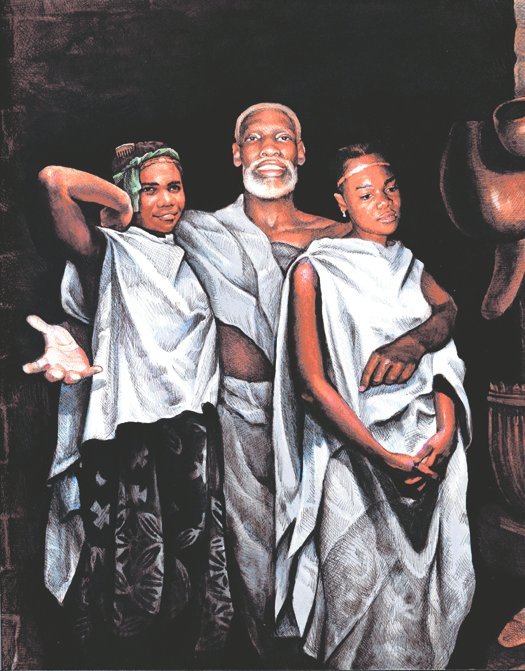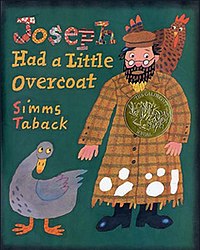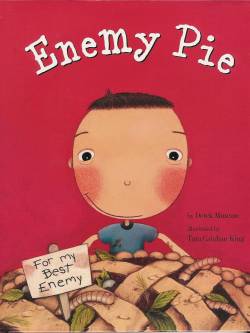
by Denise Fleming
The story of a mouse who gets very hungry, leaves his mousehole, and finds a whole table of delicious fruits and vegetables to eat. He approaches each one, each a different color. You can see just a corner of the produce to give you a clue as to what it is that he is going to eat on the next page. The words also prompt you to guess. Mouse eats "sweet yellow".... (with the corner of a cob of corn on that page). Turn the page and it's confirmed that it is corn, which is being sloppily devoured by the mouse. I love the hilarious body language of the excited mouse. At the end of the book he is thoroughly filthy, leaving a trail back to his mousehole. Great for ages infant to preschool.
Have a little fun: As you're reading, have your child guess what the fruit or vegetable is that the mouse will eat next (you can see a corner of the vegetable on each page to give a clue). Sing this song (complete with actions) with your child. This is better with a group of children who actually are wearing different colors, but you can make it work. Cut circles in different colors and put them on your body when you sing about that color. Or, you could take clothing of different colors from their closet and throw them on for singing each color. A fun dress-up game! If you'd like accompanying music, go to the National Institute of Health site. I like this site because it includes a lot of the music to accompany songs for children.

If you are Wearing....(Sung to the tune "If You're Happy and You Know It")
If you are wearing red, shake your head
If you are wearing red, shake your head
If you are wearing red
Then please shake your head
If you are wearing red, shake your head
If you are wearing blue, touch your shoe
If you are wearing blue, touch your shoe
If you are wearing blue,
Then please touch your shoe
If you are wearing blue, touch your shoe
If you are wearing green, bow to the queen
If you are wearing green, bow to the queen
If you are wearing green,
Then please bow to the queen
If you are wearing green, bow to the queen
If you are wearing yellow, shake like Jell-O
If you are wearing yellow, shake like Jell-O
If you are wearing yellow,
Then please shake like Jell-O
If you are wearing yellow, shake like Jell-O
If you are wearing black, pat your back
If you are wearing black, pat your back
If you are wearing black,
Then please pat your back
If you are wearing black, pat your back
If you are wearing brown, turn around
If you are wearing brown, turn around
If you are wearing brown,
Then please turn around
If you are wearing brown, turn around
images via www.pabook.libraries.psu.edu and guitarati.com




















